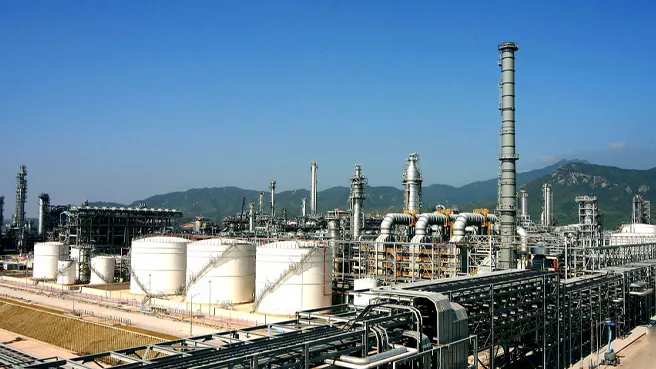
styrene rubber
Understanding Styrene Rubber Properties, Applications, and Benefits
Styrene rubber, an elastomer that constitutes a crucial segment within the synthetic rubber industry, has garnered attention for its unique properties and versatile uses. Typically, it encompasses two primary varieties styrene-butadiene rubber (SBR) and styrene-ethylene-butadiene-styrene (SEBS). Both types are characterized by their combination of styrene and rubber components, which contribute to their resilience, flexibility, and durability.
Properties of Styrene Rubber
One of the hallmark features of styrene rubber is its excellent elasticity, making it a prime choice for applications requiring stretching and bending. The presence of styrene, a thermoplastic polymer, imparts strength and stability, while the rubber component ensures flexibility. This combination results in a material capable of enduring extreme conditions, from high temperatures to varying degrees of mechanical stress.
In addition to its superior elasticity, styrene rubber exhibits excellent chemical resistance, particularly against oils and solvents. This property is crucial for products that may encounter harsh environmental conditions or aggressive substances. Moreover, styrene rubber maintains its performance capabilities over a wide range of temperatures. Whether at sub-zero levels or elevated heat, it retains its structural integrity, offering a dependable solution for demanding applications.
Applications of Styrene Rubber
The versatility of styrene rubber renders it suitable for a myriad of applications across various industries
. In the automotive sector, it is extensively used in tires, seals, and gaskets, where its durability and elasticity are essential. SBR, in particular, is favored for tire manufacturing due to its excellent wear resistance and ability to handle the rigors of road travel.styrene rubber

In the construction industry, styrene rubber finds its place in adhesives and sealants. Its water-resistant properties make it an ideal component for waterproofing materials, contributing to the longevity and durability of structures. Moreover, in consumer goods, styrene rubber is prevalent in products such as footwear, toys, and household items. Its blend of resilience and comfort makes it a popular choice for various applications.
Another significant domain is the medical sector, where styrene rubber is utilized in the production of flexible, robust medical devices. The ability to withstand sterilization processes while maintaining flexibility and strength is a critical requirement for such applications.
Benefits of Styrene Rubber
The benefits of incorporating styrene rubber into products extend beyond mere physical properties. Economically, it presents a cost-effective alternative to natural rubber, offering similar if not superior performance characteristics without the volatility of raw material prices that natural rubber often experiences. This aspect has made styrene rubber particularly attractive for manufacturers aiming to balance quality and cost-efficiency.
Moreover, the environmental footprint of styrene rubber is increasingly being addressed. With advancements in recycling technologies, it is becoming more feasible to recycle styrene rubber products, aligning with global sustainability goals. This shift towards more sustainable practices is encouraging manufacturers to innovate while still meeting environmental regulations.
Conclusion
In conclusion, styrene rubber stands out as a remarkable material characterized by its elasticity, durability, and resistance to various environmental factors. Its diverse applications across multiple industries underscore its importance in modern manufacturing and consumer products. As research continues to evolve and environmental considerations gain prominence, the future of styrene rubber appears promising. By balancing performance with sustainability, styrene rubber is set to remain an integral component of both everyday products and industrial applications, reflecting the evolving needs of society.
-
Why Glacial Acetic Acid Food Grade Is Essential in FlavorNewsMay.26,2025
-
Surging Export Growth of Food Additives in ChinaNewsMay.26,2025
-
How Ammonium Nitrate Fertilizer Boosts Crop YieldsNewsMay.26,2025
-
How 1,2,3-Benzotriazole Shields Plastics from UV DegradationNewsMay.26,2025
-
Cyanide in Gold Mining: Protecting People and the PlanetNewsMay.26,2025
-
Aluminum Hydroxide in Modern Sunscreen FormulationsNewsMay.26,2025
-
Understanding Synthetic Rubber OptionsNewsApr.27,2025
Hebei Tenger Chemical Technology Co., Ltd. focuses on the chemical industry and is committed to the export service of chemical raw materials.
-

view more DiethanolisopropanolamineIn the ever-growing field of chemical solutions, diethanolisopropanolamine (DEIPA) stands out as a versatile and important compound. Due to its unique chemical structure and properties, DEIPA is of interest to various industries including construction, personal care, and agriculture. -

view more TriisopropanolamineTriisopropanolamine (TIPA) alkanol amine substance, is a kind of alcohol amine compound with amino and alcohol hydroxyl, and because of its molecules contains both amino and hydroxyl. -

view more Tetramethyl Thiuram DisulfideTetramethyl thiuram disulfide, also known as TMTD, is a white to light-yellow powder with a distinct sulfur-like odor. It is soluble in organic solvents such as benzene, acetone, and ethyl acetate, making it highly versatile for use in different formulations. TMTD is known for its excellent vulcanization acceleration properties, which makes it a key ingredient in the production of rubber products. Additionally, it acts as an effective fungicide and bactericide, making it valuable in agricultural applications. Its high purity and stability ensure consistent performance, making it a preferred choice for manufacturers across various industries.











